You are looking at a PVC valve and see the term “socket end.” You are unsure if this is the right connection for your pipes, and ordering the wrong type means project delays.
A PVC valve socket is the female end of a valve, designed to accept a PVC pipe. It creates a permanent, waterproof seal using solvent cement (glue), making it the most common connection type for PVC systems.
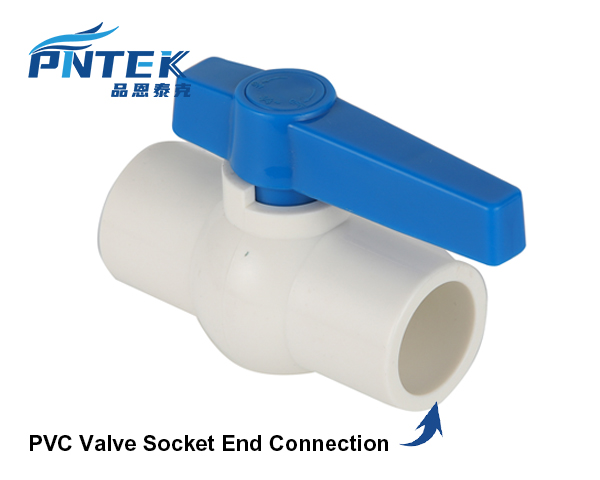
This simple term, “socket,” can sometimes cause confusion, especially when you also see options like “threaded.” But choosing the right connection type is one of the most important decisions for a leak-proof system. I often have this conversation with my partners like Budi in Indonesia. He needs to provide clear guidance to his customers, the contractors and plumbers. They need to know that a socket connection, when done correctly, is not just a connection—it is a permanent weld. Let’s break down exactly what a socket is and why it is so important.
What is a valve socket used for?
You need to join a valve to a pipe permanently. A weak connection could lead to disastrous leaks and expensive repairs down the line, ruining your project’s reputation and costing you money.
A valve socket is used to create a strong, permanent, and leak-proof connection between a valve and a PVC pipe. The pipe is inserted into the socket and chemically welded using solvent cement, forming one solid piece.
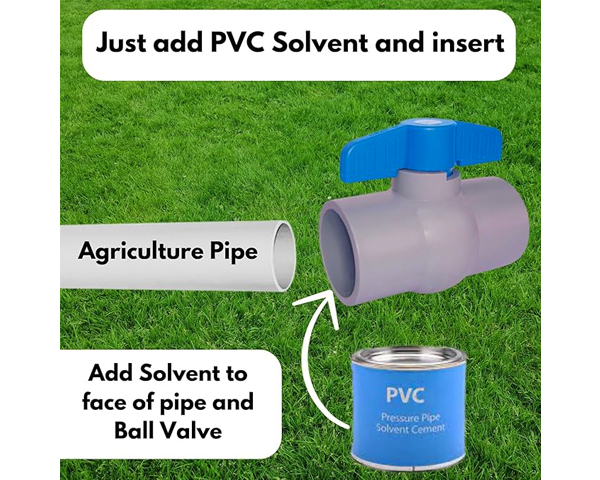
The real magic of a socket connection is the process called solvent welding. It is not like using regular glue to stick two things together. The solvent cement actually melts a thin layer of the PVC on both the pipe’s outer wall and the valve’s inner socket wall. When you push them together, these two melted surfaces fuse. As the solvent evaporates, the PVC hardens into a single, seamless, and incredibly strong piece of plastic. This creates a bond that is as strong as the pipe itself, ensuring it can handle pressure and will not leak or loosen over time. It is the gold standard for permanent PVC installations.
The Solvent Welding Process
To get that perfect, leak-proof bond, you must follow the steps carefully.
- Cut and Deburr: Get a clean, square cut on the pipe. Scrape off any plastic burrs from the inside and outside of the pipe end.
- Clean and Prime: Use a cleaner and then a primer on both the outside of the pipe and the inside of the socket. This step is critical; it removes grease and softens the PVC for a better weld.
- Apply Cement: Working quickly, apply an even coat of solvent cement to the outside of the pipe and a lighter coat to the inside of the socket.
- Insert and Twist: Firmly push the pipe all the way into the socket until it hits the stop. Give it a quarter-turn to spread the cement evenly and hold it in place for about 30 seconds to prevent the pipe from pushing back out.
What is a PVC valve used for?
You need to control the flow of water in a pipe. Without a reliable valve, you have no way to perform maintenance, isolate sections, or even shut off the flow in an emergency situation.
A PVC valve is used to start, stop, or regulate the flow of fluid in a PVC piping system. They are essential for controlling water in applications like irrigation, swimming pools, water treatment, and residential plumbing.
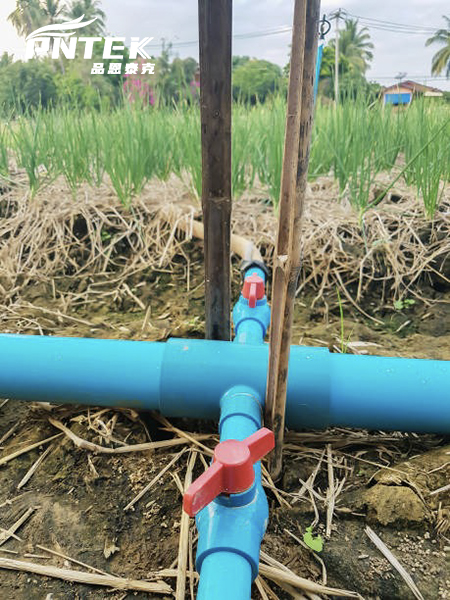
PVC valves are the essential control points in any water system. They are popular because the PVC material itself is resistant to rust and corrosion, making it perfect for handling water and many chemicals. It is also lightweight and much more affordable than metal alternatives. This is why PVC valves are the top choice for so many of our partners’ customers, from farmers setting up irrigation to contractors building new houses. Different jobs require different types of control, so we manufacture several kinds of valves. Each one is designed for a specific purpose within the piping system.
Common Types of PVC Valves
Understanding the right valve for the job is key to a well-designed system.
| Valve Type | Primary Use | How it Works |
|---|---|---|
| Ball Valve | Quick On/Off control. | A ball with a hole rotates 90 degrees to open or close the line instantly. |
| Check Valve | Prevents backflow. | A flap or ball allows water to flow in only one direction. Protects pumps. |
| Butterfly Valve | On/Off for large pipes. | A disc inside the pipe rotates to control flow. Often used in pipes 3″ and larger. |
| Gate Valve | Slow On/Off control. | A flat gate slowly slides up and down. less common |
What is a PVC socket used for?
You need to join two pieces of PVC pipe together or connect a pipe to a fitting. Getting this joint wrong means leaks, low pressure, and having to cut out and redo the work.
A PVC socket is the female-end opening on any PVC fitting (like a coupling, elbow, or tee). It is designed to receive a plain-end PVC pipe, creating a joint with solvent cement.
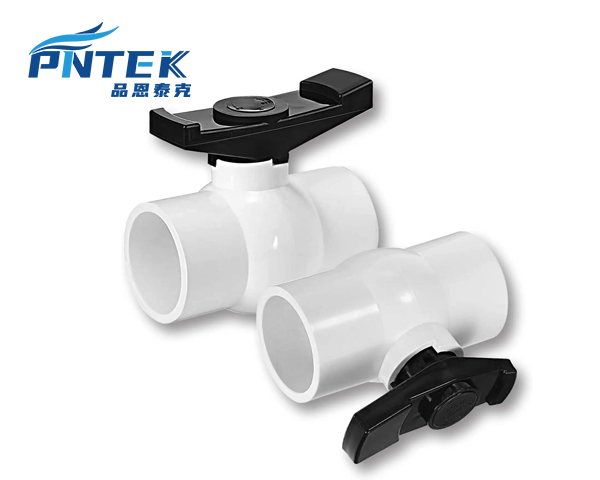
The term “socket” is not exclusive to valves. It is the universal term for the standard female connection on almost all PVC fittings. Whether you are using a fitting to change the direction of a pipe or a valve to control its flow, the socket part works in exactly the same way: it accepts a pipe to create a solvent-welded joint. The only real difference is what the component does. A fitting simply connects pipe, while a valve connects pipe and adds a control function. The quality of this socket is extremely important. At Pntek, our molds are engineered for very tight tolerances. This ensures a snug fit with the pipe, which is critical for a strong, reliable weld that will not fail under pressure.
Socket Fittings vs. Valves
Both use sockets for connection, but their roles in a system are different.
| Component Type | Function |
|---|---|
| Coupling | Connects two pipes in a straight line. |
| Elbow (90° or 45°) | Changes the direction of the pipe run. |
| Tee | Creates a T-junction to branch off a new line from the main run. |
| Cap | Seals the end of a pipe run permanently. |
| Valve | Connects to pipe and controls the flow of water (on/off, regulation). |
What does “socket” mean in PVC fittings?
You see “socket,” “slip,” “hub,” and “female end” used to describe the same connection. The different terms are confusing, and you worry about misinterpreting a product description or an invoice.
In PVC fittings, “socket” means a female end designed for a solvent weld connection. It is the same as “slip” or “hub.” It describes the recessed opening where a piece of plain-end pipe is inserted and glued.
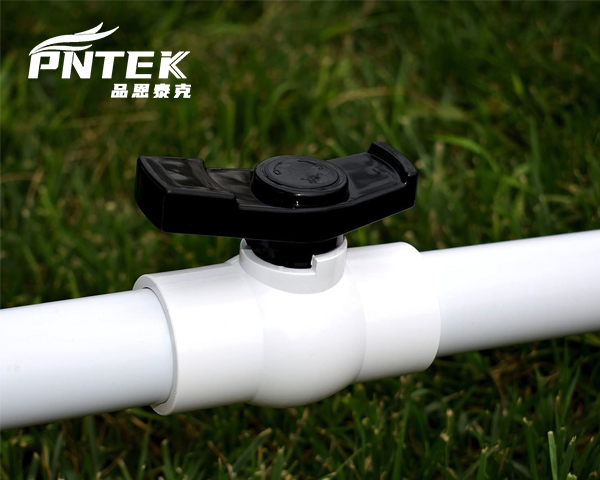
All these terms mean the same thing. “Socket” is the most common technical term. “Slip” is often used in North America because the pipe “slips” into the fitting before being glued. “Hub” is an older term but is still used. They all refer to the same type of connection, which is completely different from a threaded connection. Understanding this difference is one of the first things I teach new partners. When you know the difference, you can design systems that are both strong and serviceable where needed.
Socket vs. Threaded: The Two Main Connection Types
Choosing the right connection type is critical for a successful plumbing project.
| Connection Type | How it Works | Best For… |
|---|---|---|
| Socket (Slip/Hub) | Uses solvent cement for a permanent, welded bond. | Permanent installations, underground systems, high-pressure lines where you need maximum strength and no leaks. |
| Threaded (FPT/MPT) | Male and female threads screw together, sealed with PTFE tape. | Connection points to pumps, filters, tanks, or anywhere you may need to disassemble the system for maintenance. |
You must never use solvent cement on threaded fittings. The chemicals can make the plastic brittle and cause it to crack under the pressure of tightening. This is a common mistake that can lead to system failure.
Conclusion
A PVC valve socket is the most common and reliable way to connect a valve to a pipe. Understanding this basic connection and how to properly weld it is the key to building durable systems.
Post time: Sep-23-2025




